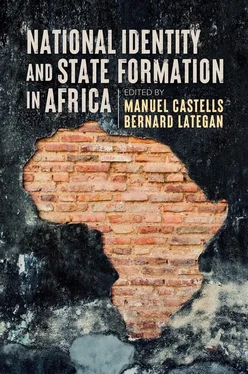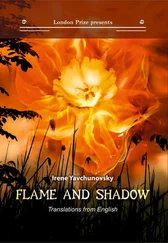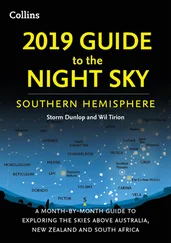Carlson Anyangwe discusses the options of incorporation, secession and independent nationhood as a different set of strategies to deal with the tensions between cultural diversity, inclusion and exclusion, and the legacy of two colonial interventions in a specific region – that of the Southern Cameroons. He approaches identity – a topic that falls primarily within the disciplines of anthropology and sociology – from a legal perspective and focuses on the interface between identity and the law. The dispute between the Republic of Cameroon and the Southern Cameroons is not only territorial, but also an identity- and resource-based conflict. The chapter further investigates state formation and international law with particular reference to national identity. A final section deals with the distinct identity of the former United Nations trust territory of the British Southern Cameroons in its claim to, and epic struggle for, sovereign statehood.
Bahru Zewde pursues the topic of secession in a different setting. His entry point is the remarkable events in the Horn of Africa in 2018, when Prime Minister Abiy Ahmed ushered in a new era by ending the long stalemate of ‘no war no peace’ between Eritrea and Ethiopia. His analysis makes clear that mobility is already operative on the most basic level of identity formation and that this has consequences on the higher level of state formation. Identity itself is a site of mobility and fluidity, demonstrating its mediating potential. Yet this bridging capacity is seldom utilized. Zewde therefore maintains that the root of the problem is the accentuation of mono-identities by Ethiopia’s elites and the consequent failure to accommodate multiple identities. The reality on the ground is that both Ethiopia and Eritrea are composed of a mosaic of different nationalities and regions. The same ambiguity is visible at state level where Eritrea cherishes its hard-won independence but also wants to enjoy the maximum benefit from the interdependence with Ethiopia. The attitude of Eritrea towards Ethiopia is thus one of both attraction and repulsion. This ambivalent stance has its roots in Italian colonization and Eritrea’s hard-fought struggle for independence.
Samson Wassara provides a counter-example where the mobility of identity and national diversity do not result in convergence and nation-building, but in fragmentation. He traces the historical developments and social dynamics that led to the fragmentation of national identity in Sudan. While colonial powers played a role, external forces also contributed to the process. He argues that the impact of Arabism and Islam led to anxiety among non-Arab nationalities and to the construction of regional and ethnic identities as a measure of protection, leading eventually to the secession of South Sudan from Sudan. However, the identity of the South Sudanese was constructed on the weak foundation of geographical belonging and of resistance to a common enemy and oppressor. When South Sudan gained its independence in 2011, this common enemy left the scene and citizens reverted back to their tribal affiliations and former colonial regions, resulting in the current crisis of identity and state formation.
The second part of the book approaches this crisis from a different angle, focusing on South Africa. What may appear to be an overconcentration on one country is intended as an exploration of generic trends in more depth and detail in a specific region, illustrating the intricacies and often contradictory sub-currents, the practical outcomes and their conceptual and theoretical implications. Similar concentrated studies of other countries or regions would be as valuable. Although the local context, its history, circumstances and power relations might be totally different, the same global forces are at work and the same generic challenges have to be faced.
The four chapters on South Africa illustrate the emergence of novel state formations and alternative expressions of loyalty to the state. Some of these strategies exhibit a remarkable degree of inventiveness and ‘nimble-footedness’, making effective use of the resources provided by global networks. Despite their location in the same political space, these case studies illustrate a diversity of approaches and difference in logic which motivates the choices in each specific strategy or by specific social actors.
This section is introduced by an analysis of recent developments in ‘Afrikaner’ circles and, more specifically, of the Solidarity Movement in South Africa. Danelle van Zyl-Hermann returns to the core theoretical argument of the book that the emergence of the network society challenges existing concepts of the state as a stable, homogeneous or unambiguous presence exercising dominion over defined spaces with clear physical, relational and ideological boundaries. She then describes how in post-apartheid South Africa, identity politics is being mobilized in an effort to establish an ‘alternative state’ for the white, Afrikaans-speaking minority. Van Zyl-Hermann traces the history of Afrikaner state formation since the nineteenth century, demonstrating the various permutations such efforts have taken over time. The Solidarity Movement is taking advantage of the opportunities afforded within the post-apartheid context of Afrikaner political disempowerment and the rise of global white nationalist and anti-multiculturalist discourses to mobilize on the basis of resistant Afrikaner nationalist identity. In contrast to secessionist or nationalist identity politics elsewhere in the world, these initiatives emanate from the sphere of civil society and do not represent aspirations for formal political or territorial autonomy. Rather, the Solidarity Movement’s plans for Afrikaner minority autonomy revolve around creating institutional, community-based and even virtual spaces for Afrikaner and white self-determination. These provide evidence of new strategies of state formation in the network society and of the unexpected forms these may take.
In the same post-apartheid context, Marizanne and Albert Grundlingh describe a very different manifestation of the relationship between local identity, the state and broader global realities. They present the curious case of a group of South Africans who are avid supporters of the New Zealand rugby team (the ‘All Blacks’). This represents a subterranean current which surfaces only occasionally in the media, but which is no less real in the lives of many ordinary rugby fans. This is an attitude which is under renewed pressure after the recent victory of South Africa in the Rugby World Cup championship. The authors argue that although support for the All Blacks in South Africa may at first appear as wilfully contrary and even perversely wrongheaded, it demonstrates the many and enduring fault lines still plaguing South African society.
Jabulani Sithole and Mary de Haas analyse aspects of ‘Zulu’ identity. Sithole explains why KwaZulu-Natal (KZN) remains the one province in South Africa with the most persistent and formidable ethnic identities – identities which sometimes exhibit secessionist and regionalist tendencies, despite all attempts to forge a national unity in the country. Why the persistence and resilience of this specific expression of ethnic identity? In pursuing this question, Sithole traces the complex and fragmented history of the region and finds that the idea of a consolidated ‘Zulu’ identity only emerged during the second half of the nineteenth century. He then probes the implications of the recent resuscitation of Zulu ethnic identities and concludes that sections of the country’s population are still searching for ways of reconciling individual human rights with collective cultural belonging. What emerges is the picture of a ‘composite’ state, containing conflicting elements typical of a kingdom, of a regional, secessionist state, and of a group participating on the national level of government.
Читать дальше












